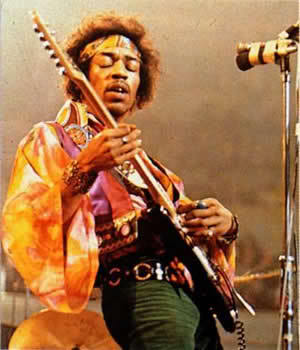
How to Hand Wah-Wah Your Singing Bowl
Share
March 14, 2012 - by Shakti
If you lived through the 60’s, the term “Wah-Wah” conjures memories of Jimi Hendrix’s Voodoo Child, or the theme from the 70’s movie Shaft, but probably not an image of a Tibetan Singing Bowl. While all singing bowls naturally produce oscillating frequencies, the Hand Wah-Wah is added oscillation capability in certain, specially constructed singing bowls which can be manipulated to modulate its sound waves by gently squeezing the base of the bowl with the holding hand.The first bowl that actually “spoke” to me – that clearly communicated (as if it were speaking English) that it was my bowl – was a Hand Wah-Wah bowl. It was awkward. Our bed & breakfast suite was open for a trunk show in Sedona, Arizona, and a couple of ladies were hovering over a kitchen table crammed with bowls. I struck one bowl randomly (ha!) out of the crowd, and immediately heard the “bend” in the struck tone. I’d never heard anything like that and I wanted to hear more! But I didn’t want to draw my customer’s attention to it, cause I was afraid they’d notice how cool it was. So I waited til they picked up another bowl and when they were completely focused on it, I snatched my bowl and stowed it under the table! It was love at first sound: that bowl sat by my altar for the next 11 years. I spent hours losing myself in its kaleidoscopic harmonies.
How is the Hand Wah-Wah different from the other modulations that singing bowls make? When heard binaurally, singing bowls naturally produce beat frequencies that sound like an oscillation of the bowls’ harmonics. All singing bowls produce these beats: they are the bowl’s pulse which kinetically entrains our brainwaves and calm the mind for meditation. They’ve worked this way for thousands of years. Often, two separate pulses can be perceived: usually a slower pulse in the fundamental tone and a faster one in the female overtone. But this is not the “wah-wah” effect; these oscillations are just “standard equipment” in a singing bowl.
Hand Wah-Wah bowls are different. In 16 years I’ve been working with singing bowls, I honestly have no idea what is different about their physical structure that enables us to produce these modulations. I’ve studied the bases of these bowls. They are both thick and thin; their bases are rounded as well as flat; I have found no physical common denominator between them. All I know is that Hand Wah-Wah bowls are rare; usually only a handful of bowls in any collection will have that capability. They look like ordinary, Thadobati style, antique singing bowls.
So to get the effect, you first need to know your bowl has a Hand Wah-Wah capability. We will usually notate this capability in our description of our singing bowls; they turn up most often on the medium bowls. Wherever you find it, once you know you have one, here’s how you get the technique:
1) Start by looking at the position of the bowl on your holding hand. It should be positioned so that just your fingertips are slightly extended beyond the base of the bowl. In most instances, you want to avoid wrapping your fingertips around the curve in the bowl’s base, as that can dampen a bowl’s sound. However, with this technique, slightly wrapping your fingertips around the bowl’s base can sometimes enhance the Wah-Wah effect.
2) Strike your bowl with the covered end of your mallet. Whether it’s covered with leather or wool doesn’t really doesn’t matter, but bear in mind that the suede mallet will emphasize the mid and female overtones in a bowl, and those are the tones that lend themselves to the Hand Wah-wah effect the best.
3) Once struck, very gently squeeze the base of the bowl with your holding hand. It’s important to note that you are contracting your hand with every squeeze and as you do, a space opens up between your hand and the base of the bowl. This is where the sound is being modulated. On some bowls, the hand wah-wah is positional: they will have a “sweet spot” where it jumps out at you. So if you don’t find the wah-wah at first, rotate the bowl around until you find it. Another technique that works is to rock the bowl from your fingertips to the heel of your hand.
You can also see videos on You Tube of people making a “wah-wah” sound by modulating the bowl’s sound waves with the aperture of their mouths. Except for certain really dense and thick singing bowls, almost any singing bowl will respond to this technique. Strike your bowl and place your mouth about an inch away from the upper wall near the rim. Then, purse your lips in a fish-like motion. You don’t have to vocalize at all, just play with shaping the sound waves in your mouth by the dilating aperture of your lips. This too is positional: if you don’t hear anything at first, rotate the bowl around until you find its “sweet spot”. The richer the harmonics of the bowl, the more bend you can get out of the wah-wah. The larger and more sloped the bowl’s wall, the tones there you can isolate and bend. What’s great is to actually “taste” the tingly sensation of the sound waves in your mouth – delicious!
To see a quick video demo on both techniques, please check the video page on our Website. Have fun!

